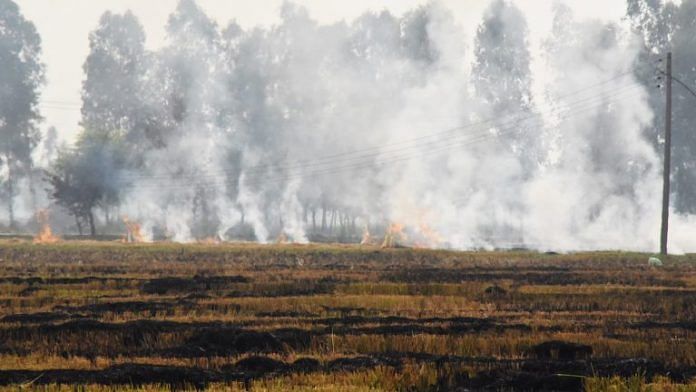New Delhi: The national capital’s air quality was recorded in the poor category on Sunday morning and the share of stubble burning in Delhi’s PM2.5 pollution is likely to increase significantly, according to a central government agency.
It was 19 percent on Saturday, 18 percent on Friday, around one per cent on Wednesday and around 3 per cent on Tuesday, Monday and Sunday.
The city recorded an air quality index (AQI) of 275 at 8:30 am. The 24-hour average AQI was 287 on Saturday. It was 239 on Friday and 315 on Thursday, the worst since February 12 (AQI 320).
An AQI between 0 and 50 is considered ‘good’, 51 and 100 ‘satisfactory’, 101 and 200 ‘moderate’, 201 and 300 ‘poor’, 301 and 400 ‘very poor’, and 401 and 500 ‘severe’.
During daytime, winds are blowing from northwest, bringing pollutants from farm fires. At night, calm winds and low temperatures are allowing accumulation of pollutants, according to an India Meteorological Department official.
According to the Ministry of Earth Sciences’ air quality monitor, SAFAR, the farm fire count around Haryana, Punjab, and neighbouring border regions was 882 on Saturday.
Since transport-level wind direction was favourable for intrusion, stubble contribution in Delhi’s PM2.5 pollution was around 19 percent on Saturday, it said.
The Ministry of Earth Sciences’ Air Quality Early Warning System for Delhi said the ventilation index a product of mixing depth and average wind speed is likely to be 12,500 metre square per second on Sunday favourable for dispersion of pollutants.
Mixing depth is the vertical height in which pollutants are suspended in the air. It reduces on cold days with calm wind speed.
A ventilation index lower than 6,000 sqm/second, with average wind speed less than 10 kmph, is unfavourable for dispersal of pollutants.
It, however, said the impact of stubble burning on Delhi’s air quality is likely to increase significantly by Monday.
Punjab and Haryana have recorded more incidents of stubble burning this season so far compared to last year and it is largely due to early harvesting of paddy and unavailability of farm labour due to the coronavirus pandemic, according to officials.
The Central Pollution Control Board (CPCB) had Friday said meteorological conditions in Delhi have been “extremely unfavourable” for dispersion of pollutants since this September as compared to last year.
With less area under non-basmati paddy cultivation this time, CPCB Member Secretary Prashant Gargava hoped the number of stubble burning incidents will be fewer this year compared to 2019.
Non-basmati paddy straw is considered useless as fodder because of its high silica content and so farmers burn it.
Gargava also said stubble burning peak might not coincide with the peak of adverse meteorological conditions this year due to early harvesting of paddy.
Also read: ‘Staying in denial will not help’ — Kejriwal slams Javadekar’s remark on stubble burning



